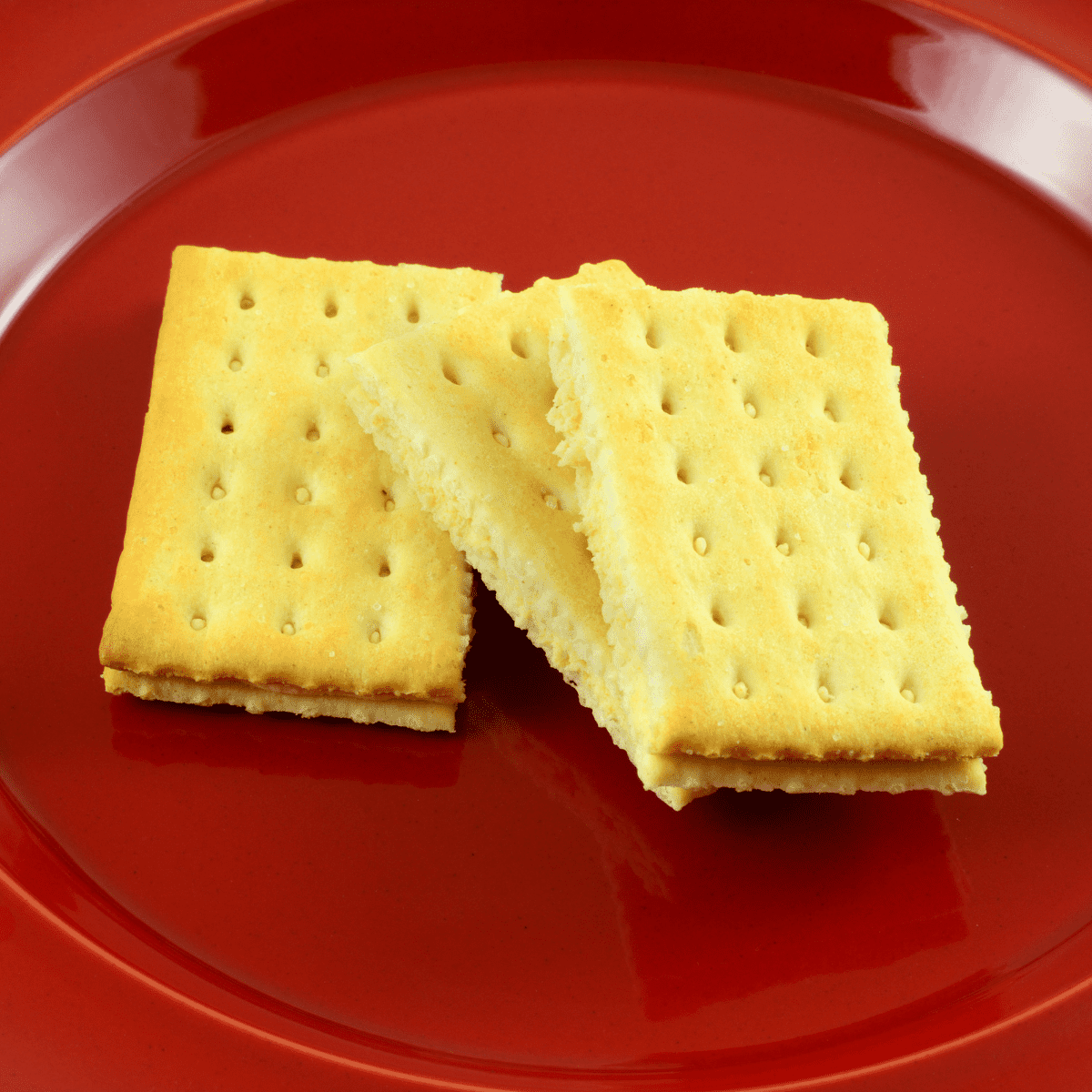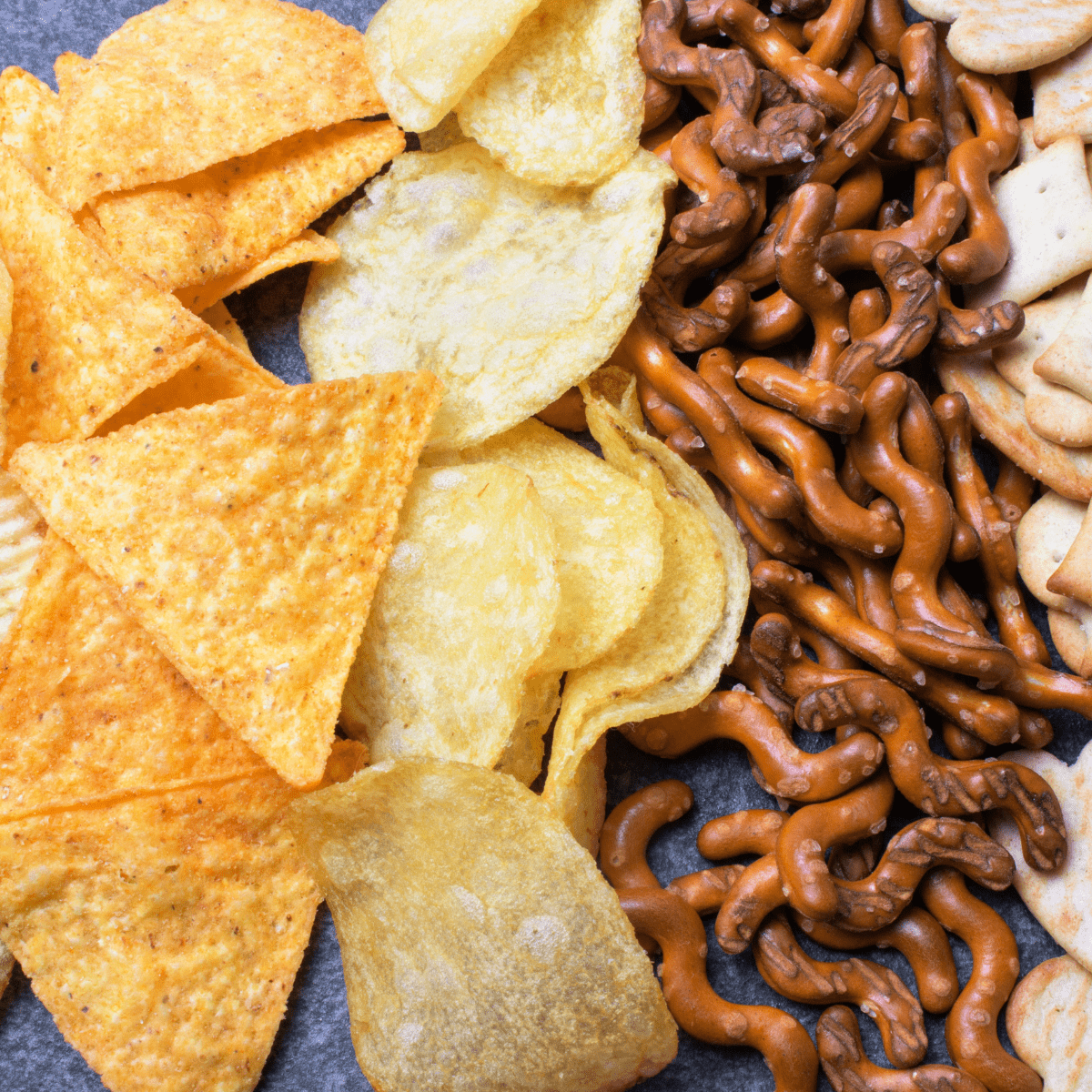Help! My 2-Year-Old Won’t Eat Anything But Snacks
Sep 28, 2022, Updated Mar 16, 2025
This post contains affiliate links. Please see our disclosure policy.
Picky eating is one of the most common complaints about toddlers, preschoolers, and young kids. But you CAN make it better!

Table of Contents
- When Your Toddler Won’t Eat Anything…Except for Snacks
- Do You Have A Snack-Obsessed Toddler?
- 3 Simple Ways To Reduce Picky Eating and Limit Snacks
- 1. Stick To Regular Meal And Snack Times
- #2 Limit The Availability Of Snack Foods
- #3 Offer A Safe Food At Every Meal
- My Advice: Stay Strong & Ask For Help If You Need It (When Your 2-Year-Old Won’t Eat Anything But Snacks)
When Your Toddler Won’t Eat Anything…Except for Snacks
I’ll never forget this one morning when I asked my son, “Are you ready for breakfast?” He looked me right in the eye and do you know what he said to me? In his MOST defiant toddler voice?
“No! Snack!!” 😤
I still gave him his regular breakfast (I just didn’t say the word “breakfast” again…) but it made me think about how much more excited toddlers get for snack time than meal time. Toddlers learn early on that snack foods can be so much more fun and delicious than meal foods. And it makes sense! Who would want to eat a plate of chicken, broccoli, and rice if they knew they could just eat a bunch of Pirate’s Booty or Goldfish instead?
If your 2-year-old is picky like mine was and won’t eat anything but snacks, you are in the right place. In this post, I’ll share tips, easy swaps, and my advice as both a pediatric dietitian and mama to a previously very picky eater. And don’t worry, I promise that advice won’t be, “Well, if you just never let your kid eat any of those snack foods, they will happily eat whatever you give them!” (I wish it were that easy!)

Do You Have A Snack-Obsessed Toddler?
First things first, let’s get on the same page about whether or not your toddler’s snacks-only policy is a “big deal” or not. To figure it out, tell me if any of these sound familiar:
- Your toddler refuses to eat during a meal but asks for a snack shortly after.
- They are constantly asking for crackers, chips, cookies—all the pantry favs!
- And often, you end up giving in because…
- You don’t want them to be upset.
- You don’t want them to go to bed hungry.
- You’re TRYING to get something done and need 5 minutes without whining.
- You’re worried they’re not eating enough.
(In other words, you are doing your BEST to feed them well and get them to eat enough. But it’s getting hard!)
If you’re nodding along and thinking, “Kacie, this is exactly us. How did you know?!” I promise it’s not that I’ve intercepted your baby monitor footage or hijacked your nanny cam. I’m not spying on you! It’s just that this is so common. Many parents go through this, and it’s never their fault (just like it’s not YOUR fault). But if you’re ready to make a change, here’s what you can do.


3 Simple Ways To Reduce Picky Eating and Limit Snacks
Picky eating isn’t the kind of feeding concern that has a quick fix. Children aren’t picky on purpose—there’s often a genetic component involved! So expect that BIG, finish line-type of progress to take time. But with that said, these 3 simple swaps will be easy for you to implement and should get you a picky “win” or two pretty quick!
1. Stick To Regular Meal And Snack Times
The #1 most important thing you can do to cut down on picky eating and limit excessive snacking is to establish regular meal and snack times.
Kids of all ages THRIVE on routine, and feeding routines are no exception! Don’t worry though, this doesn’t mean creating a super-strict schedule that you have to educate your family members, friends, and your kid’s caregivers on, then police non-stop. You wear enough hats as it is! Most of our schedules don’t look the same every day, so your food routine doesn’t have to, either! If you can do your best to find a flexible framework that works most of the time, that’ll be enough for you to see an improvement.
Do what works for you, but this is what the flexible routine looks like in our house, most days:
- Breakfast at 7:30 am (ish)
- Snack at 10 am (ish)
- Lunch at noon (ish)
- Snack at 3 pm (ish)
- Dinner at 6 pm (ish)
Having a routine built around your snack and mealtimes gives your kids an idea of what to expect each day. It also helps teach them that “These are the times when we eat.” And on the flip side, much to their dismay, the time to eat is not, in fact, whenever they feel like it. 😂
I know it can be hard to say no when they tell you they’re hungry. Especially if, like me, you want to teach your kids to listen to and trust their bodies. But remember, as the parent, you know that you’re offering them plenty of opportunities for them to eat throughout the day. There are plenty of times when they get to listen to their bodies, eat when they’re hungry, and stop when they’re full. So when they ask for a snack outside of these times, you can feel OK about saying no.
Hunger Is Not An Emergency
I want you to keep in mind that even if your child is truly hungry when they ask for a snack, it’s okay for them to feel that hunger for a little while. If you’re sticking to a regular meal schedule, hunger is not an emergency. And I promise, asking them to wait a while isn’t the same thing as letting them “go hungry”.
Many parents have a hard time accepting this, so it’s okay if you do, too. But children do need to learn, over time, how much food their body needs at once. If they get to eat whenever they want to, they won’t learn that mealtimes are when we fill up. In other words, they’ll never get the chance to reflect and think, “Hmm, I’m still hungry. I should have finished my lunch to keep me full!” By letting them experience hunger for a short while between what will be very consistent and regular meals and snacks, you’re teaching them how to navigate hunger and fullness throughout their days.
What To Do After You Say No
Toddlers have BIG feelings and they don’t hesitate to let them out. And by “let them out” I mean hurl them at full speed, directly at you. 😅 And that’s enough to test even the most steadfast parent’s resolve! So here are some tips for what to do after you say no to a snack:
- If they’re young enough, distract them with something else. If you think your two-year-old might be asking for crackers because they’re bored, instead of launching into a speech about why they can’t have them right now, you might just say, “It’s not snack time yet. Let’s go pick out a book! Do you want to read about dinosaurs?”
- If they’re a little older, you can simply tell them that it’s not meal/snack time and we’ll be eating in an hour (or whenever the next time is). You might also suggest an alternate activity or offer them something else, like a glass of water. You can also ask if they want to help you prepare the next meal when it’s time!

#2 Limit The Availability Of Snack Foods
After setting a schedule, my next tip is to avoid keeping a smorgasbord of snacks in the house. I know it’s easy to fall into having a cupboard full of snacks because we want to give our kids what they like and keep what we know they’ll eat on hand. So I don’t want you to ban all these foods or anything! That wouldn’t be realistic. I also don’t want you to feel bad about having these foods around either. (It’s good to have a few go-to’s on-hand—more on that in Tip 3!). It’s just that sometimes, having TONS of beloved foods on hand can make it harder to stick to your convictions.
And don’t get me wrong, I’ve used the, “Park’s closing! We have to go home!” line a LOT in my day…but not having certain foods around also gives you a reason to say no without feeling guilty or pulled to make up a reason why. (I mean, if you don’t have Doritos, you can’t give them Doritos. Simple!)
A Note On Sugary Snacks
I’m a big believer that all foods fit and that you don’t have to worry about your kids having the occasional piece of cake or donuts for breakfast, but I do want to point out that the official recommendation is to avoid giving kids added sugar before 12 months of age. And if you can, it’s a good idea to continue limiting added sugar in toddlerhood too.
Take this with a grain of salt though—Sugar, salt…see what I did there?—because of course, as they grow, this gets MUCH harder. I mean, if they go to daycare, school, a friend’s house, or a birthday party there are going to be snacks and treats provided, and that’s okay. The bottom line is that you should avoid added sugar before their first birthday and limit it after that, but you don’t need to panic if they have it sometimes!

#3 Offer A Safe Food At Every Meal
There’s dated advice floating around about picky eaters that says, “If they get hungry enough, they’ll eat what you make!” (I swear I can HEAR the eyes of every picky parent rolling to the back of their heads as I type this!) I wanna update that advice.
It’s true that if your picky eater is TRULY hungry, they will be more likely to eat. But ONLY IF there’s a safe food available.
If your child is a picky eater, you probably already know what their capital-f FAVORITE safe foods are. And I bet you’re offering them up very often, out of necessity. The shift I want you to try making is this: Every once in a while, offer a food that’s safe—but NOT their very favorite. In other words, offer less of the foods your picky eater goes wild for, and more of the foods that they like, but don’t love. (For myself, a good example would be sweet potatoes. I enjoy them, but I wouldn’t just snack on a whole plate of them while watching TV!)
Often, with picky eaters, an easy ‘like-but-don’t-love’ food is fruit. So if it fits in your grocery budget, go out of your way to buy more! Many kids will devour it, and if you’re stuck in a snack rut, having more fruit on hand can help get more nutrients and fiber in there.
You can still keep those super-beloved favorite foods around—I usually keep 1 or 2 in the pantry! But try to incorporate foods they like but don’t love quite as much, too. This way, you’re not restricting the less nutrient-dense choices like donuts, soda, chips, and cookies, but your picky eater will eat them a bit less often.
If you want an easy visual to help put together a list of their safe foods, grab this free download.

What To Do If They Don’t Like ANYTHING Nutritious
If your child’s safe foods don’t include anything that isn’t packaged, animal-shaped, or laden with chocolate chips, that’s okay. Start by swapping one of the pre-made foods they’re used to with something similar, but with slightly more nutritious ingredients.
So if they LOVE chewy chocolate chip granola bars, try offering them a chocolate chip Larabar, which is made with dates and nuts but still tastes super sweet and has chocolate chips. Or, if they LOVE chips, try offering them a baked chip, like Popcorners, as a small shift away from fried.
Little steps always lead to bigger changes. So instead of feeling like, “What’s the point? They’re still eating packaged food!” Remember that you’re setting the stage for them to make bigger leaps to more fresh food items down the road.
My Advice: Stay Strong & Ask For Help If You Need It (When Your 2-Year-Old Won’t Eat Anything But Snacks)
I know switching from giving them what they ask for when they ask for it to giving them something slightly different at a time of your choosing won’t necessarily be easy. You may have to endure a meltdown or two, and you may have a cranky toddler for a few hours because they want to have their way. Try and stay strong! I promise it’s much better to muscle through a few days of big toddler feelings than it is to have to answer to, “NO chicken. NO LUNCH. I want a snaaaaaack,” day in and day out.
And if you and your picky eater are REALLY struggling with this…
- If they’re VERY picky and literally only like eating snacks…
- If they are eating NOTHING you serve at meals…
- Or if you try these tips and they shut you down faster than you can say “Goldfish!”…
Don’t be afraid to seek support.
Picky eating is complicated. It’s not something you’re excepted to just know how to navigate. I want to help you move your toddler away from picky eating while moving your family towards feeding freedom. Without bribes or miserable mealtimes!














